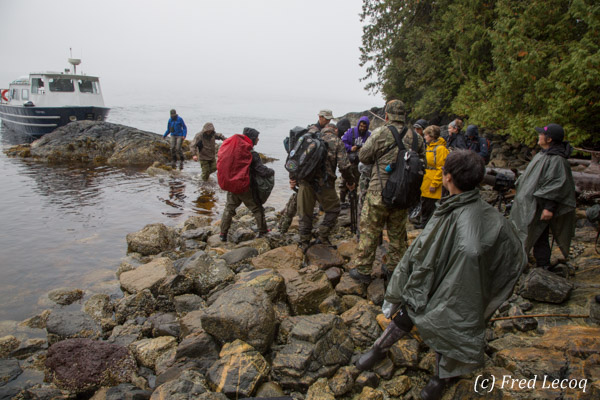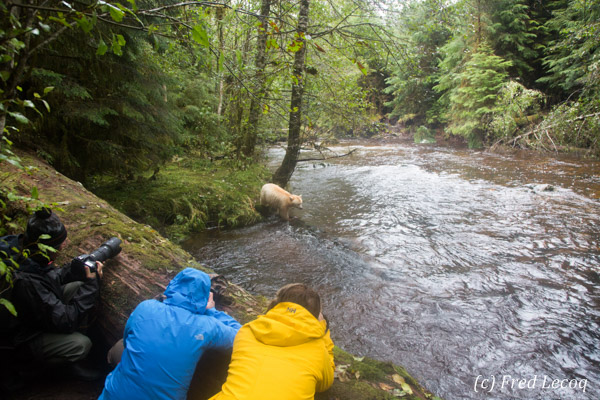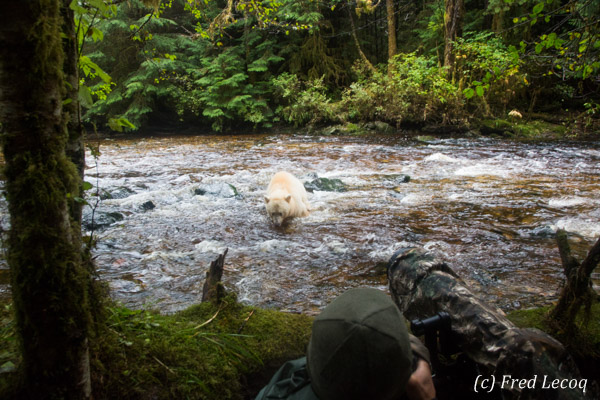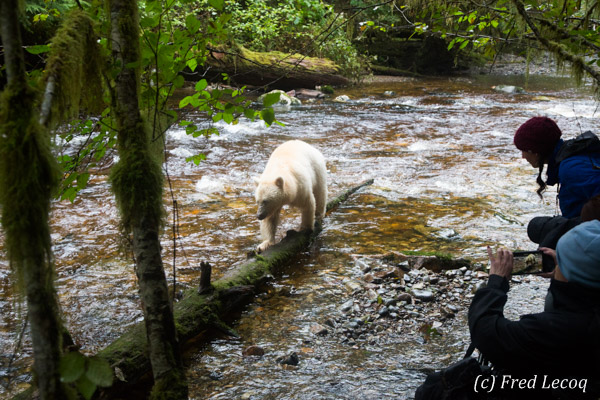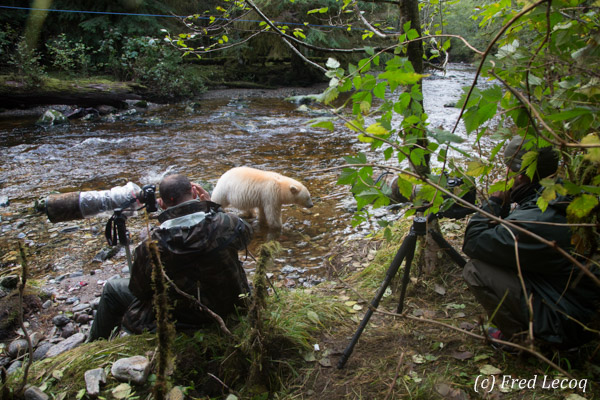A typical day in the Great Bear Rainforest
A typical day in the Great Bear Rainforest is governed by considerations of safety, weather, tide, and the presence and movement of the wildlife.
Generally, the days are organised as follows. They start with a breakfast around 7-7:30am in order to be able to meet on the dock and leave around 8am, taking a lunch basket. A privatized boat allows navigating through the channels and fjords to reach an area where wildlife – most often black bears and Kermode bears, but also sometimes wolves – have been observed to pass and hunt or fish at this time of the year.
Boat crossings normally last from 30 to 60 minutes and, throughout a stay, multiple observation sites are explored. After having landed (often a wet landing), a 10 to 20 minute walk in the forest or along the river is required to reach the observation area. Without being hugely difficult, this walk does often take place on muddy, wet and slippery terrain.
Between September and October, the climate is mild but wet. The fog and the rain often make the atmosphere of the forest especially enigmatic.
Arriving at the observation area, the members of the small group (maximum 15, unless a smaller group privatizes the boat) spread along the banks of the river, supervised by the guides who monitor the surroundings and bear(s). In some places, covered observation platforms are accessible. The day is spent waiting, observing and photographing the various bears that come walking or fishing for salmon in the river. Some encounters are very close but conducted under the supervision of the guides, whose priority is security and the avoidance of any incident (which explains why most of the guides have never had to use their bear pepper bomb!).
Around 6pm, the small group makes its way back to Hartley Bay to arrive at the guest house around 7-7:30pm to have dinner around 8pm before a night of well-deserved sleep.
Note: Black bears and humpback whales are seen almost daily. Other wildlife that are seen commonly include salmon, American marten, American dippers, Steller sea lions, orcas, fin whales, Dall’s porpoise, river otters, bald eagles, and numerous other bird species. There is also the possibility of seeing wolves but their observation is significantly rarer.

